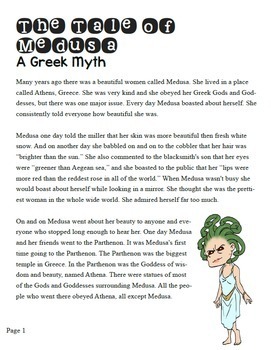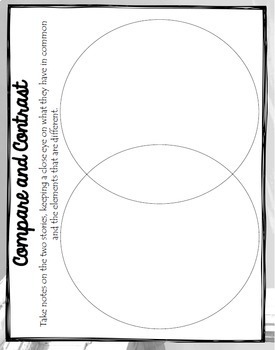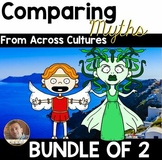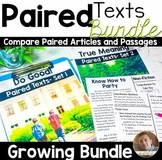Comparing Myths & Legends Writing - Greek Myth Medusa & Iroquois No-Faced Doll
- PDF
What educators are saying
Also included in
- This BUNDLE includes both of the Comparing Myths and Legends packets including Medusa VS. No-Faced Doll and Icarus vs. Native American Legend.Here are the full descriptions:Icarus VS. The Warrior and The Eagle:This project asks students to compare myths and legends from two very different cultures,Price $5.00Original Price $6.00Save $1.00
- Included in this pack are paired texts, including fiction and non-fiction. After reading, students then answer multiple-choice questions and short answer questions to deepen understanding of the information.The packs are easily packaged for you to print for students. There is a cover page, directionPrice $22.57Original Price $32.25Save $9.68
Description
Your students will love this reading and writing assignment that compares the Greek Myth of Medusa with the Iroquois or Haudenosaunee legend, The No-Faced Doll”. While Greek Mythology and Native American legends may seem like two very different genres, with little to no similarities, think again! This project asks students to compare myths and legends from two very different cultures, finding both the similarities and differences. Through this common core linked project, 4th, 5th, and 6th grade students are engaged in the reading and writing process.
Comparing Myths & Legends Writing - Greek Myth Medusa & Iroquois No-Faced Doll Includes:
- A brief overview of the standards addressed.
- A student page explaining the reading and writing task.
- An introduction to myths and legends, including key terminology students must know before completing this assignment (including hamartia- tragic flaws in characters).
- Two myths
- Four Text-dependent questions for each of the myths (8 questions total).
- Three graphic organizers- (theme, hamartia, compare/contrast, and a four square organizer to plan the writing process).
- Writing paper for students to write their final essay.
Through this activity, students are addressing many common core standards of Reading Literature, including to make connections across cultural texts. Use this resource to touch on multiple standards, while teaching new topics in an engaging format!
Clip art provided by: Lovin Lit, Educasong, Apples and Acorns, and The Library Fox
See What Other Teachers Are Saying . . .
⭐ I loved this. I used it during student teaching and the students loved the story and the writing that went with it, I was observed teaching it and got a great eval!
⭐ I loved all the stories included and it made it super easy to plan for my students to work with comparing and contrasting.
⭐ This is a great resource for a difficult skill! My students really enjoyed learning about both of these myths. Extremely engaging. Thank you!
More Fun and Engaging Resources from Mr. Mault’s Marketplace:
- Comparing Myths and Legends - Digital Activity
- Historical Study of the Cherokee Nation
- Historical Perspectives Mini Bundle
⭐ Follow Me to be notified when new resources are added. ⭐
Find more on the Website | Connect with me on Instagram | Follow on Facebook







